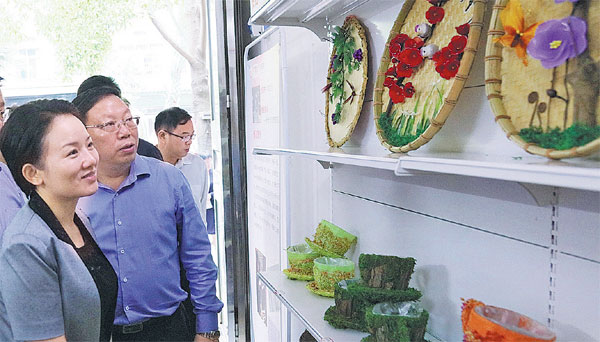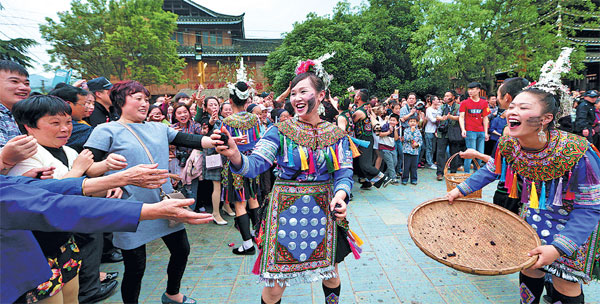Prefecture taps tourism to reduce poverty
Updated: 2017-10-11 07:49
By Yuan Shenggao(HK Edition)
|
|||||||||
The authorities of the Xiangxi Tujia and Miao autonomous prefecture in Hunan province plan to build local tourism into a 100 billion yuan sector.
The short-term goal is to attract more than 60 million annual visits to the prefecture by 2020, generating 50 billion yuan ($7.5 billion) in tourism revenue, its Party chief Ye Hongzhuan said at a local tourism forum on Sept 18.
Xiangxi, where President Xi Jinping proposed the concept of targeted poverty alleviation during his visit in 2013, has taken tourism as a key approach to reducing poverty and it has made marked progress, according to local officials.
|
Dongting Lake in Hunan is the second-largest freshwater lake in China. Li Jianzhi / For China Daily |
As an all-for-one tourism demonstration area, the 15,500-square-meter prefecture is home to 229 eco-culture tourism brands and 26 national intangible cultural heritage items.
The heritage sites include Laosicheng, an ancient capital of the region which is one of the three Tusi, or tribal leader sites, designated by UNESCO as part of the world's cultural heritage; Ancient Phoenix Town, where 28 ethnic groups live; and the tucked away ancient town of Liye, which has a history of over 2,300 years.
Such sites have helped to attract a growing number of tourists. The prefecture reported more than 23 million arrivals in the first eight months of this year, who generated roughly 20 billion yuan in tourism revenue.
Local residents, especially those from poor villages, have benefited hugely from the flourishing tourism industry.
Among them is Huangdu Dong Culture village, which is located in the Tongdao Dong autonomous county.
The county, where members of the Dong ethnic group make up the majority of the population, was long known for its poverty. Tourism has helped to change that.
The Hunan provincial government has earmarked an annual 60 million yuan to aid Tongdao to reduce poverty over the past three years, since it was named a key tourism-themed county in 2014.
The county government has also poured tens of millions of yuan into the county to improve its facilities and create jobs for locals.
Thanks to these efforts, Huangdu Dong Culture village has become an increasingly popular destination for visitors wanting to experience the well-preserved Dong people's customs.
The influx of tourists has turned a dancing and singing troupe, composed of more than 30 local villagers, much busier.
Their performances have increased to twice a day from once a week, with the number of daily visitors surpassing 300, which enables each of the performers to earn 3,000 yuan a month, more than 1,000 yuan they earned several years ago.
The performing troupe has, in turn, increased the popularity of the village and also spurred a boom in other businesses including rural homestays.
More than 300 poor families in the village were involved in tourism in 2015, approximately 60 of whom ran homestay businesses, according to Ou Junlou, Party chief of the village.
As a result, more than 500 villagers have escaped poverty, he said.
The thriving tourism industry has also given a new lease of life to traditional handicrafts. Among them, Dong embroidery has proved to be very popular.
For Shi Peiyun, a 70-year-old weaver, for instance, her Dong embroideries that used to bring in 4,000 yuan in sales, now make 10 times that amount.
Jiangyong county is also working to eliminate poverty.
In February, it was included into the country's first group of pilot counties seeking online donations to aid poverty reduction efforts
|
Yongzhou government officials visit a shop selling the handicraft works of local people. Provided to China Daily |
|
Villagers in the Tongdao Dong autonomous county, Hunan province, interact with visitors. Provided to China Daily |
(HK Edition 10/11/2017 page16)


